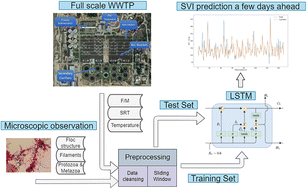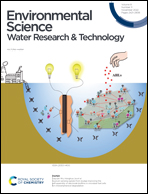Prediction of a full scale WWTP activated sludge SVI test using an LSTM neural network†
Abstract
Wastewater treatment (WWT) is a process used to remove contaminants from wastewater, prevent pollution of water sources and improve sanitation conditions. The treated effluent is reused mostly for irrigation purposes which reduces the growing global demand for clean water. Sludge separation is considered one of the main problems in activated sludge (AS) systems. Most separation problems are related to the characteristics of the activated sludge floc and the content of filament organisms. Two main key parameters to control and prevent separation problems are to conduct a sludge volume index (SVI) test and microscopic observations. In this study we used data from Shafdan, which is the largest wastewater treatment plant (WWTP) in Israel, for predicting the future value of the SVI. Recurrent neural networks (RNNs) are a class of artificial neural networks (ANNs) for processing sequential data. Long short term-memory (LSTM) neural networks are a specific kind of RNNs that are capable of learning long-term dependencies and have achieved state-of-the-art results. Our proposed bidirectional LSTM model shows an accuracy rate of 89% and an F1-score of 82% when predicting high SVI results a few days ahead, by using a window size of 5 days.



 Please wait while we load your content...
Please wait while we load your content...